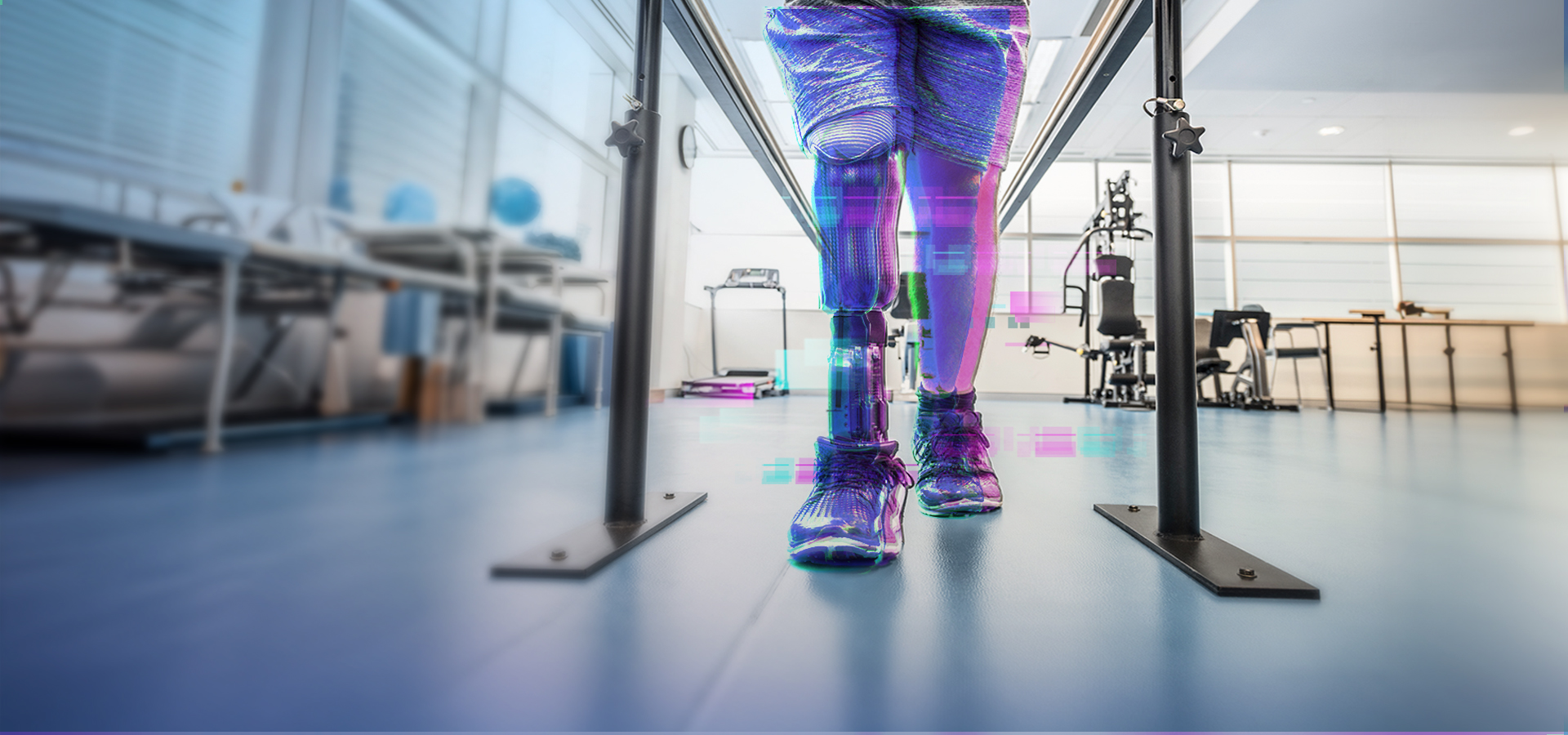
#04: What Does It Take to Build Better Prosthetics?
Discover how Easton LaChappelle turned his bedroom project into Unlimited Tomorrow, a company dedicated to crafting affordable, customized prosthetic limbs.
#04: What Does It Take to Build Better Prosthetics?
Get ready to be inspired by Easton LaChappelle, the visionary behind the world’s most lightweight and affordable bionic limbs. Founded at a young age, Easton's company, Unlimited Tomorrow, is at the forefront of innovation with its 3D-printed prosthetic arms. Learn the secret behind his success, the key industry challenges and his future plans to continue changing countless lives. Discover more
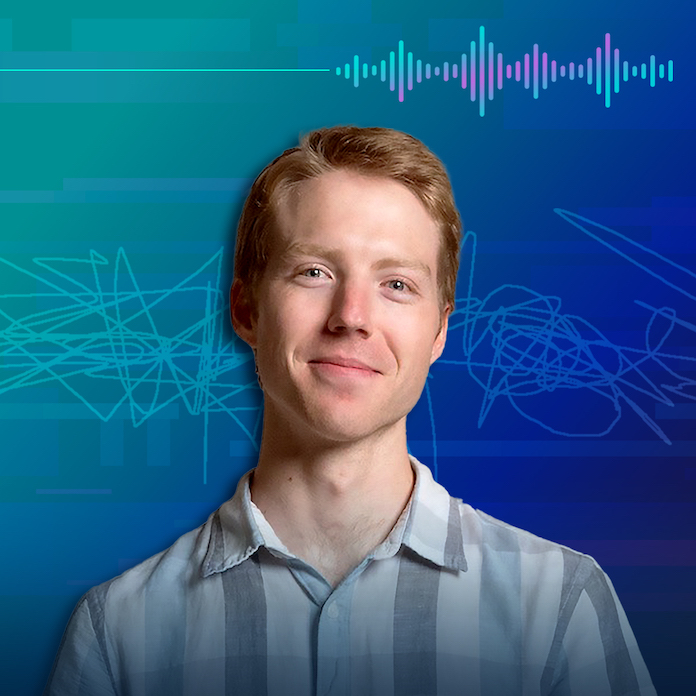
Meet our speaker
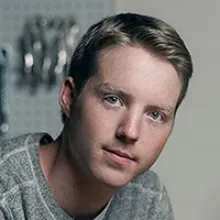
We’re helping over 40 million people globally, and there is a big problem: Only 5% of that 40 million have access to prosthetic devices. This is a problem that not a lot of people know.”
Easton LaChappelle
Read the transcript
Narrator: Welcome back to Disruptors Unleashed, the series that highlights the disruptive technologies shaping our world. In our previous episode, we looked at product reformulation with our trailblazers: Robyn Mandalakis from Act2 Consulting, Nandakumar Subramaniam from Tech Mahindra, and independent consultant Rik Pepermans.
This episode will be a story of hope and perseverance. Easton LaChapelle, the visionary founder of Unlimited Tomorrow, talks about his journey of improving lives by crafting the world’s most lightweight and affordable 3D-printed prosthetic limbs.
Host: Hi, everyone. I'm here with Easton LaChappelle in upstate New York, and we’re here to hear his story. I remember seeing Easton as a 14-year-old when you visited the White House. Then, more recently, I saw a new version of what you took to the White House, and I've just been completely inspired by that story. It's so great that we can share it with a lot more people, hopefully.
Easton: To give some context, I grew up in a very small town in Colorado, called Mancos. The population was about 1,200 people. I was a kid who would run to school and took it seriously. I always loved tinkering and taking things apart when I was little. I always had a curiosity about how things work and why things work. I would take apart microwaves, toasters, appliances of video games like VCRs – anything I could get my hands on – and a lot of that had electronics in it.
So, I realized that a lot of what is taken apart is how these small black chips and integrated circuits seemed to power the world. And there's an incredible number of things happening there. But I was always looking for a way to really understand what was happening beneath that surface. When I was about 13 or 14, I started to turn to the internet. My graduating class in high school has about 23 students. So, you can imagine there was a lot of limited resources. I would run off from school and turn to the internet.
And the internet provided two main things for me: It provided access to a vast amount of information – I could look at tutorials and videos, and read blog posts and forums. It also provided a way to communicate, so I could talk to experts in these fields and really understand what was going on within some of these engineering disciplines. At that time, I was looking for a project to dive into — to really understand and start grasping a lot of these things. I love tinkering and taking things apart, but I was looking for a way to combine them into one and start creating.
After a couple of months of research, I decided to make a robotic hand controlled by a wireless control glove. Essentially, this is a robotic hand that copies and mimics your motions whenever you move your hand. I mean, this was when I was 14, and I knew nothing about engineering, software, electronics and mechanics, even just building a robotic hand was a challenge in itself. But luckily, I was motivated. I didn't think about this as a project – it was out of curiosity and boredom running off from school and tinkering.
Easton: I don't know, and I actually get asked that question quite a bit — why robotic hands? I think, for me, there are a couple of things: It was very open-ended and something I could start very simply. It also encompassed a lot of different disciplines of engineering. And it was something I could relate to — something interactive and fun. Many of these other projects seemed fun, but what happens when you complete them? Where do you go from there? And so, I saw a lot of different ways to innovate, like just the robotic hand alone; new actuators, the software behind it, the control systems, there's a lot there. And that's when I started creating. I used Legos as plastic supports, fishing lines, tendons, and electrical tubing as the fingers, so small servo motors from RC airplanes all together in a robotic hand. And it took a couple of months of trial and error, and it was an evolution, actually.
I grew up in a very small house. And so, I was tinkering on the living room table and started turning my bedroom into a lab, staying up very late, learning software and Arduino, and turning to the open-source community, and found a passion and love to create. I ran off from school and started working into the night, and it started transforming into something interesting. Thinking back, it wasn't easy — there were a lot of trials, errors and failures. And actually, I owe a lot to that.
A good example I use is XP radios, and I broke those very fast. It was hard to grasp, but by breaking them, I understood exactly what was going on and how to fix it, which forced me to learn all the ins and outs, how they actually work on a system level and how to incorporate that. But I think that's where I went wrong because I'd take stuff and not be able to put them back together again. It’s quite a skill to have.
Easton: Looking back, this happened when I was 14, probably around 2011 or 2012. And this is when 3D printing was starting to hit the consumer market. MakerBot Industries was known for their original cupcakes made of laser-cut wood — the really interesting, cool printers. They’re very maker-level. And this was when they were just trying to hit the consumer market. It was also around that time when I just completed my first robotic hand. I plugged it in, saw it working and it was amazing. It totally motivated me to take it to the next level. What if I had an opposable thumb or individual finger joints, made it look more human-like, and then added a level of functionality on top of that? It was exciting to me; there's a lot to evolve.
The obvious next step was to go beyond these electrical tubing pieces and fishing lines and evolve into a more custom version and design of this. So, this is when 3D printing started to really come into the picture. I started teaching myself CAD. And at that time, I was into a lot of video-making and Adobe After Effects. And that's when I started getting to motion tracking. This was my introduction to thinking about 3D and very simple 3D modeling. And so, that started to get my mindset in the world of designing fingertips and how the joints can interact. And that was really the cool part, if you're actually designing something in 3D.
However, at that time, I never printed anything in 3D. Being able to think I can design something that can be physical and truly custom really changed my thought process of creating. The problem was, I didn't have a 3D printer. MakerBot was still in its infancy, so it wasn't widely available. And I couldn't go to my local library either. There was nothing like Shapeways or contract manufacturers like that. There were some high-end contract manufacturers. I remember sending my design out to a couple of them. In Colorado, I was getting quotes upwards of about $500 to print this robotic hand, which was too expensive for me. I had a lot of money from mowing lawns over the summer, and that was too much.
So, I got a little creative. And it actually brings us back to the internet and the power of utilizing social media. I had a friend who was an electrical engineer working at MakerBot Industries. He's been helping me with some software here and there, helping me understand it all. One night, he was able to print my design, and I had to pay for shipping costs. So, it was utilizing the internet and the right crowd, in that sense. And that night changed everything. I remember the moment very clearly when I opened that box for the first time and saw something I designed, actually physically in front of me, which changed a lot for me.
Easton: Yeah, I got my first 3D printer for my 16th birthday. It was from a Kickstarter project from a company called Printrbot. And again, it was all laser-cut wood. It was the first of a kind from Kickstarter. Those were the first-generation prototypes. And that changed everything for me. That printer was something that I had running 24/7 in my bedroom. And it really changed the whole process behind it.
So, I went from this 3D-printed hand to a full robotic arm and started working with other motors, growing every aspect of the project. The software is becoming more intensive; electronics, looking at the power systems, the sensors, and that's when I started getting into new control systems as well. I really enjoyed the concept and implementation of telerobotics — being able to capture human-like motion and the gloves and other sensors on your arm.
And that was when a lot of media attention was starting to pick up on it. Some of my initial designs were featured in Popular Mechanics magazine when I was 15, and I started to become involved in science fair activities. And that started to evolve into other publications and media opportunities — I was featured in Popular Science 2013. The Robonaut team at NASA actually saw the article and reached out to me through email and said, “We love what you're doing. You want to come down and do an internship at Johns Space Center and work on the Robonaut project, which was really centered around telerobotics?” So, that was a pretty cool little treat along the way.
Host: Awesome. So, what strikes me about your story is there are so many barriers that would have stopped a lot of people from doing that. And it just seems you found a way around it. It's a truly inspirational message. Because firstly, you didn't know anything about robotic arms yet, but you decided to tackle it anyway. And then, as you said, 3D printing parts were too expensive. But again, you just found your way around it.
Easton: Exactly. I think there was a level of me being naive. I remember growing up and thinking about people who make robots and how amazing and cool that is. But it always felt so distant to me. It's probably only a couple of people who do that, so how do you actually make money in that world? It was a goal of mine to get into that world, but it seemed so far away. But then, with all these opportunities, I didn't look at them as barriers. I think it was just like another challenge, something for me to just figure out, and that seemed fun.
Easton: Yeah, I love the practice, implementation and the full process of turning ideas into a reality. That's a very exciting process of going through the napkin sketch and then converting that into 3D models, refining and iterating, and then being able to produce that physically and implement that into a system. That's a really exciting piece for me to be able to really incorporate a lot of that.
I also really like the system level of it all. It's not only just mechanics — it’s really looking into designing the full system, and that's something I really enjoyed. If I had their skill sets, if I was really strong and mechanical, I probably wouldn't have done what I had done, which was exploring all these different disciplines equally. And if one lacked, then it would completely change the full project and product.
So, for me, it was just exploring the unknown and learning new things. And for me to be able to find these resources through the internet, I could learn at a rapid pace at my own pace and through my own learning styles. And I could talk and iterate extremely fast, and print and work on new code. And as consumer electronics got better, I added wireless radios. It’s a world that was just at my fingertips that excites me and makes me want to do something about it.
Easton: You know, everything that we talked about up until now has been a really special event that happened to me. And that event really motivated me to take it to the next level. In 2013, at the state science fair in Colorado, there was a public viewing and I brought this robotic arm. This robotic arm could toss a body, shake someone's hand and interact with people, and I welded together this giant steel skeleton to hold this robotic arm. And it was pretty amazing.
Then, I met a small girl who had an $80,000 prosthetic limb that was simpler than what I created. And for me, that limb was an iPhone. There were kids and adults running all over the place. But I noticed this one little girl; she was looking at the details more than anybody else. She was moving her fingers and it caught my eye: I realized that she was missing her right arm and was wearing a prosthetic device. It was an iPhone; this was a very simple human-like claw prosthetic device with one motion and one sensor next to this robotic arm, which had individual finger motions and better control systems. It was human-like, and it surprised me. I started talking to her parents more about this, trying to understand the process, like how much time and cost it takes. And it really opened my eyes, especially for children missing a limb. I found out that it takes months to create, and it's about $80,000.
And then there's a psychological aspect involved — if this little girl gets bullied at school, she really needs and wants a prosthetic limb to fit in. And that to me was the moment that I realized this was bigger than me. And I saw a lot of opportunities for what I was doing in my bedroom and how it impacts people's lives around the world, as this girl is not the only one.
And pretty much right after that moment, I remember that this was eight hours north of where I lived, and on the whole car ride back, I started working on new designs. I was pretty much drawing and sketching the whole time. And right when I got back, I grabbed one of the CADs and started designing this brand-new prosthetic limb —completely new 3D printed custom gearboxes, very organic human-like shapes, better mechanics, functionality, and control systems as well. And when you think about a prosthetic, it's really a self-contained robotic hand, arm or leg and a very intuitive control system behind it — so just two pieces to the puzzle. You’re essentially merging a man and a machine, and that's a difficult task. Even just creating one of those human-like, self-contained, robotic hands that weighs and looks within that range, and has the feel, dexterity and functionality behind it is pretty difficult. And so, I started looking into brainwave headsets and how to really turn either these muscle movements, thoughts or certain triggers into movements to make this as intuitive as possible. And that's when the development process started to really take off. I've actually been able to learn the 3D printing process, the modeling process and the profit process.
But this time, my bedroom was not a bedroom — it was a lab with a bed in the corner. And I was just enthralled and encapsulated with everything I was doing. It was exciting. Again, this is when media attention started to really take off with certain magazines and publications. Through this project, I won second place in the International Science and Engineering Fair, which put me on a lot of people's radars. And that's when I was invited to the White House for the White House Science Fair in 2013, where President Obama shook hands with this arm. And it was a really amazing moment. That was special for me. Coming from such a small town and being able to be at that level, I thought that was impossible. It excites me to see people showcasing innovation and creating. This needs to happen a lot more within the STEM and STEAM world. I used to think that people can't actually make robots for a living — that's so far out there. But this moment happened and it really made it tangible and showed what could really happen in the innovation world.
And so, I started. I was invited to give a TED talk – TEDx talk in Denver – where I started talking about my creation, going through my bedroom and learning from the internet. And that's actually how one of my main investors, Tony Robbins, an amazing motivational speaker and life coach, took notice and reached out to me. He said, “I've helped people around the world psychologically, and I’d love to help you take that step further and help them physically.” This was when I was 17 years old, just about to turn 18, and about to graduate high school. And I decided to go into this full force.
So, I had all this money behind what I was doing and the designs were making huge leaps. It's starting to get to the point where we can actually work with amputees and start testing these devices in person. It was an obvious choice for me to actually take that to the next level and start a company. So, in February 2014, Unlimited Tomorrow was founded. Tony Robbins helped provide some startup capital, mentorship and guidance, and I went from a bedroom to a garage and started building a team and resources, getting good 3D printers. And it's been amazing. This was almost four years ago when the company was founded. Between now and then, a lot of this has involved R&D — validating and proving this technology and really creating the business model and structure to support that.
Looking at this, I realized we're not only helping a couple of little girls or a couple of people around the world – we’re helping over 40 million people globally, and there is a big problem: Only 5% of that 40 million have access to prosthetic devices. This is a problem that not a lot of people know. While everybody has likely seen someone at a grocery store with a missing limb or a prosthetic device, they never realize how big of a problem it is. And there are a lot of problems to address; it’s not just the accessibility, but also the cost.
And as you can imagine, for a child who is missing a limb, those psychological aspects of missing a limb and having a prosthetic device are pretty much between $10 to $80,000 for every 12 to 14 months. And that to me is not acceptable. And so, using new technologies like 3D printing, 3D scanning and AI to augment and automate this process is what this market needs and it'll go back to the users and the people who can benefit from this.
And I think that they've been neglected over the last 30 years since only three big global companies run the industry. In the technology industry, there's been very little innovation. And there's a lot to that problem. But it's really about building new technology up and creating a business model that's scalable so we can solve this problem at a global level.
And that's where we're at right now. We started working with a number of people this year –we're working with 100 amputees around the world, a lot of children and adults – to be able to continue validating and testing this technology. We're rolling out a new model within prosthetic devices, where we deploy 3D scanners to the amputees in the comfort of their own homes. So, it only takes a family member or a friend to scan the missing arm, or the opposite if they have one. And we use this data to extract measurements and create a personalized image. So, we input these measurements into a master model using SOLIDWORKS and a lot of custom design workflow was involved. And then, we can make a customized device within a matter of seconds for each person. Then, we deploy that to a fleet of 3D printers that can print it in a strong, color-matched material resembling skin tone, and then we assemble it and ship it back to the recipient.
Host: Wow. That must be incredible — when you see someone wearing your device.
Easton: Absolutely, yeah. It's so amazing. Actually, just a couple of weeks ago, we were working with a young girl, and there were so many significant little things, like when she put on the device for the first time. That was the first time she was able to roll down both of her long sleeves — she had never been able to roll down both shirt sleeves.
And that was one of those little things that I went like, “Wow, I've never even thought about that.” There's a level of deep personal impact. For me, that involves a lot of my passions. There are still 20 ideas that I need to turn into reality, pushing technology to the maximum using new manufacturing methods to solve big problems at a global level. But it’s really about being able to impact people's lives at a deep level. One of the first things that we ask is, “What is something that you can't do that you really want to do?” It could be as simple as holding a camera or going kayaking. These are things some people have never been able to do. That's what makes this journey truly special.
We actually have a tagline: We create devices as tenacious as the people who wear them. This is something we tailor uniquely. We've also put a tremendous amount of technology into this product that we have to really enhance the user experience. For the first time, we have fingernails that can be painted — an obvious but overlooked feature in a lot of other devices. And so, that's something that we really want to put as a top priority.
We provide wireless charging, so there is no need for connectors — you just put the device on a base overnight, and it's charged right up. We have a battery life that lasts three to four days, which is better than any other device. And everything we create is from the ground up. Almost everything that we do is custom-made. So, there are no off-the-shelf components or pre-designed systems, which often come with a lot of inefficiencies and problems found in current devices. So, everything is custom-built around the application.
We have force feedback, allowing the users to actually have a sense of touch when they pick up an egg. We've been pioneering new biometric sensors to read muscles at high resolution, and get a world of data — we get so much data that we actually have to implement pattern recognition, machine learning and deep learning to decode and convert them into something meaningful for the person such as certain grips. And so, we’re just creating these full feedback loops directly connected to the users’ minds.
We're getting into a really amazing side of this, where there's a lot of data that can really change the user experience for the better. From the data, we make the experience tailored very uniquely to the users, where it functions to the brain as if it's a real hand, and we're finding that that reduces the learning time tremendously. Take, for instance, Momo, one of the first recipients of our device. Within the first 10 minutes of interaction, you can actually see the moment when her brain clicked, and she focused on moving her hand versus moving her muscles. And that's a really special moment to witness.
Host: Yeah, I guess, in a way, you're trying to catch up over thousands of years of evolution in a few years of starting the company.
Easton: Yeah, absolutely. It's tricky. A lot of these technologies, as you can imagine, can be applied in a lot of other areas. The big message of Unlimited Tomorrow is augmenting the human body. So, we're starting with upper-extremity prosthetic limbs and looking at lower-extremity prosthetic limbs. With this business model and structure that we're creating, we can accommodate many of these new products and solve these problems on a large scale. We’re also exploring mobility and exoskeletons, and how we can use new technology, motors and battery systems to help benefit someone's life and make them more independent, mobile or psychologically benefit from it. Something like going to school and not getting bullied — this is the level of functionality we aim to achieve along the way.
Easton: So, earlier this year, we actually discovered an interesting way to raise money. And this has really set the bar for us at Unlimited Tomorrow, where we help people in deeply personal ways. So, it felt very natural to turn to the crowd. And there are lots of ways that we can utilize the crowd, like crowdsourcing and crowdfunding. We chose to go through a financial round through equity crowdfunding.
So, we went through MicroVentures and Indiegogo, and we actually broke records: We raised about $1.6 million in 30 days through equity crowdfunding. It involves over 1,200 investors and it was a really perfect fit for our mission. And we really want to utilize that crowd, to turn to the people to help people. Later this year, we're creating another Indiegogo campaign to raise money, so we can donate the next 100 units out to people around the world to help continue testing and validating, and really help take this to market and bring this to life.
Easton: Yeah, there's a lot in the works. Just recently, we moved to New York to be able to expand a facility and get some really amazing support. We have some amazing enterprise partnerships with Dassault Systèmes, and some other large companies to help us find the best technology and product perspective, so we can make better products faster and better, making them accessible all around the world. So really, we want to master the upper-extremity limbs, catering to below the elbow, above the elbow markets. And we've been changing designs to cater to the mass around that. Part of this also comes back to solving this global problem and it really comes down to relationships and partnerships. So, we’re looking at partnering with foundations and nonprofits to help take this around the world as the people who need these the most are the people who don't have the money or access, and we really want to solve that.
So, we're really focused on that. This technology is very cross-platform. Something that we're always working on is developing technology that we can use in many other ways, looking at other products in the future and building the infrastructure as well. We have an amazing R&D facility and a production facility where we can practically make these products and scale them to very large amounts. Sometimes, that is one of the biggest hurdles along the way. But we still have some amazing infrastructure that allows us to do some amazing things right now.
Host: Great. Well, keep up the good work is all I can say.
Easton: Thank you. Well, I feel like I'm just getting started in a lot of ways. I feel like we are still a young company and we're making things happen.
Host: Yeah, that was incredible. You got an awesome facility here in New York and I'm expecting even bigger things to come. So, thanks for your time. Thank you for inviting me in and yeah, all the best.
Narrator: Disruptors Unleashed is produced by Dassault Systèmes. For more episodes, follow us on Apple Podcasts, Spotify, Deezer, or your nearest streaming platforms. To learn more about Dassault Systèmes, visit us at 3ds.com.
Learn more
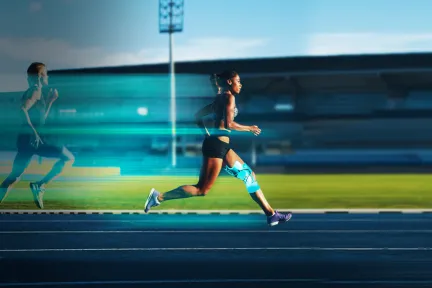
Bring quality medical devices to the market faster with an end-to-end simulation advantage.
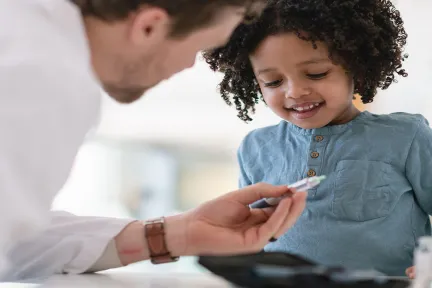
Virtual Twin Experiences for Sustainable Innovation – Helping People Live Healthier Lives



